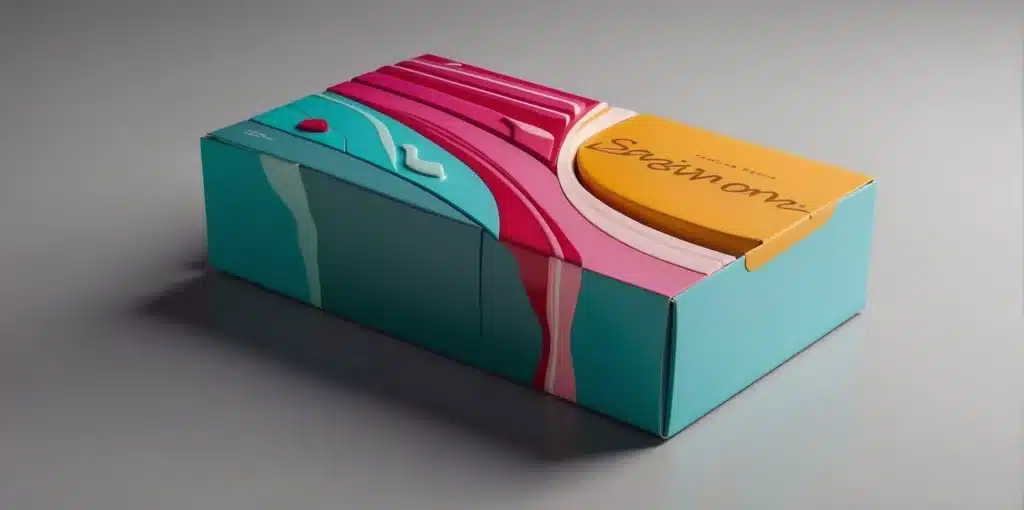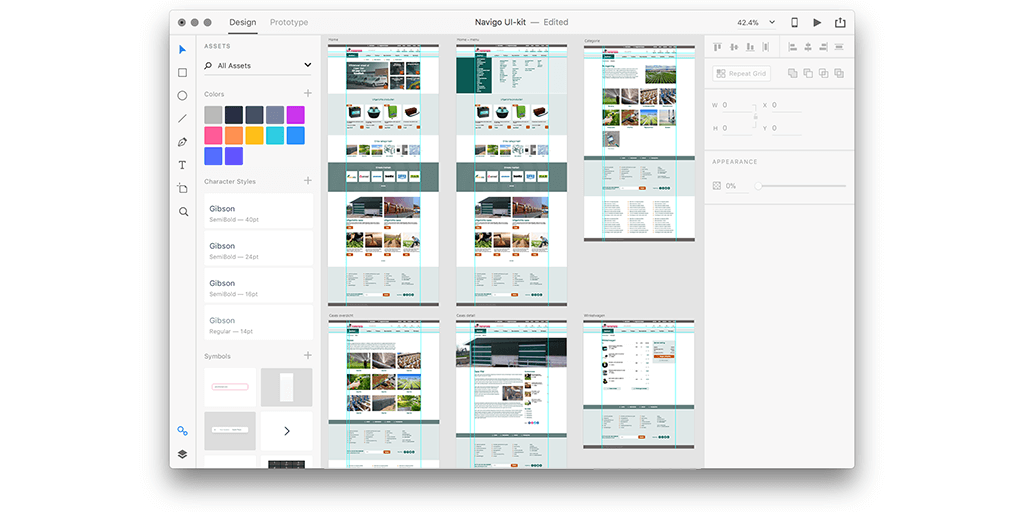In the bustling digital marketplace, with many brands adopting a unique branding strategy, standing out is the most important thing than ever. Gone are the days when a simple product from many brands could win hearts based solely on functionality, branding strategy, and reviews as the important thing. Today, digital product packaging and printing weave together to tell a compelling story, one that captures attention in the blink of an eye, with details on cardboard through a printer.
This evolution from mere utility to emotional connection mirrors our journey from traditional markets to online platforms, where visual appeal, branding strategy, and brand identity play pivotal roles in consumer decisions, significantly influenced by outer packaging and product details.
As we dive into this blend of art and strategy, remember: your digital footprint isn’t just about what you sell; it’s about how you package with cardboard and present your story with voice and product details to the world.
- Understanding Digital Product Packaging
- The Importance of Branding for Digital Products
- Design Principles for Effective Digital Packaging
- Impact of Packaging Design in E-Commerce
- Key Elements of Successful Digital Branding
- Crafting Memorable Unboxing Experiences
- Sustainability in Digital Product Packaging
- Innovative Packaging Strategies for the Digital Age
- Enhancing Brand Experience Through Design
- Closing Thoughts
- Key Takeaways
- Frequently Asked Questions
Understanding Digital Product Packaging
Market Differentiation
Digital product packaging plays a crucial role in setting products apart in the online world. With countless options available, unique printing and packaging can catch a customer’s eye. It tells them that your product, with its unique printing and packaging supplies, is different and worth their attention.
The design of digital packaging often incorporates printing elements that reflect the brand’s identity. This might include specific colors, fonts, or themes consistent with the brand’s overall image. For example, a luxury skincare brand might use sleek, minimalist designs and high-quality printing to convey elegance and quality.
Visual Appeal
Enhancing visual appeal is another key function of digital product packaging. Good design grabs attention and can make a product stand out on a crowded web page. It’s not just about looking good; it’s about communicating value at first glance.
High-quality images and clear product details are essential here. They allow customers to understand what they’re buying without needing to dig deeper unless they want to. An attractive package design can suggest reliability and trustworthiness before the customer even reads the description.
Brand Touchpoint
For many customers, digital product packaging is their first interaction with your brand. This makes it an invaluable tool for building initial trust and interest. The way your product looks online sets expectations for its quality and value.
This touchpoint offers an opportunity to start telling your story through visuals alone—think of it as a silent salesman working around the clock on every platform where your products appear.
The Importance of Branding for Digital Products
Builds Trust
Branding is not just a logo or a color scheme. It’s the heart and soul of your digital product. A strong branding strategy makes your product more than just another item in the digital marketplace. It builds trust and credibility among potential buyers.
When people recognize your brand, they’re more likely to trust your product. Think about it: when you see a familiar brand on an online store, don’t you feel more comfortable buying it? That’s the power of branding at work. It turns skeptical viewers into confident customers.
Memorable Identity
Creating a memorable identity is crucial in today’s crowded market. Many brands compete for attention, but only those with a distinct persona stand out. Your digital product needs an identity that captures minds and hearts.
Imagine scrolling through pages of similar products; what would make yours pop? A unique brand identity does that job perfectly. It could be an unforgettable tagline or visually appealing graphics – anything that makes potential buyers remember you.
Customer Loyalty
The end goal isn’t just to attract customers but to keep them coming back for more. Brand loyalty is golden in the business world, especially for digital products where options are endless.
Loyal customers don’t just buy once; they become advocates for your brand, spreading word-of-mouth recommendations like wildfire. This cycle starts with effective branding that resonates deeply with users’ values and preferences.
- They appreciate consistency.
- They value quality interaction.
- They expect innovation aligned with their evolving needs.
To foster customer loyalty:
- Ensure consistent quality across all touchpoints.
- Engage actively with feedback and suggestions.
- Keep innovating without losing sight of what made them love you initially.
Design Principles for Effective Digital Packaging
Simple Clarity
The essence of powerful digital product packaging lies in its simplicity and clarity. This design principle ensures that the value of your digital product is communicated quickly and effectively to your target audience. A clutter-free design, with a clear message, not only captures attention but also makes it easier for potential customers to understand what you are offering.
In practice, this means using minimalistic designs that focus on key elements such as your logo, product name, and a succinct description. For instance, an eBook cover should prominently feature the title and author’s name without unnecessary embellishments. Similarly, an app icon should be recognizable at a glance without being overly complex.
Brand Consistency
Achieving consistency across all digital platforms is crucial for brand recognition. Your branding—colors, fonts, logos—should remain uniform whether viewed on a website, social media profile or within the app store. This consistency reinforces your brand identity among consumers and builds trust over time.
To implement this principle effectively:
- Use the same color scheme across all platforms.
- Ensure logos are identical in appearance wherever they appear.
- Adopt a consistent tone of voice in all written content related to the product.
By maintaining these elements consistently, you create a seamless experience for users no matter how they interact with your brand online.
Color Psychology
Utilizing color psychology can profoundly impact how potential customers perceive your digital products. Different colors evoke different emotions and can influence consumer behavior accordingly. For example:
- Blue often represents trustworthiness and security.
- Green is associated with growth and calmness.
- Red can signify energy or urgency.
Choosing the right colors as part of your packaging design process plays into creating an emotional connection with your audience. It’s about more than just aesthetics; it’s about communicating feelings that resonate with their desires or needs concerning what you’re selling.
When selecting colors for your digital packaging:
- Consider the emotions you want to evoke.
- Match those emotions with corresponding colors based on color psychology principles.
- Test various shades to find which works best in conveying your message while keeping brand consistency.
By focusing on simplicity and clarity in design communication value swiftly enhances user understanding of what’s offered—a cornerstone in effective digital packaging strategy;
Impact of Packaging Design in E-Commerce
Purchase Decisions
The first moment a customer sees a product online, their decision-making process kicks into gear. Digital product packaging and branding play crucial roles here. They’re not just wrapping; they’re powerful tools that influence consumer choices. A visually appealing package can make or break the sale.
When shoppers browse online, they can’t touch or feel products like they do in stores. So, digital packaging needs to work harder to grab attention. It must convey quality and trustworthiness at a glance. Colors, images, and design elements all send signals about what’s inside.
Perceived Value
Packaging does more than protect contents; it adds value. Well-designed digital product packaging suggests that what’s inside is worth paying for. This enhances the perceived quality of the product without changing anything about the product itself.
Consider two identical items with different packaging designs: one plain and one premium-looking. Most consumers will perceive the latter as higher quality and may even be willing to pay more for it. This psychological effect underscores how important design is in e-commerce settings.
Conversion Rates
Attractive packaging isn’t just nice to look at; it drives sales too. Visually appealing presentations have been shown to increase conversion rates significantly. This means that when your digital product looks good on screen, people are more likely to buy it.
Here are some ways effective packaging influences conversions:
- Clarity: Clear information about what’s being sold helps customers make quick decisions.
- Branding: Consistent use of colors, logos, and styles makes products recognizable.
- Emotion: Good design evokes emotions that can lead directly to purchases.
To wrap up this section:
- Make your digital product stand out with compelling visuals.
- Focus on clarity and consistency in your branding efforts.
- Never underestimate the power of emotional appeal through design.
Key Elements of Successful Digital Branding
Distinctive Logo
A distinctive logo is crucial for digital product packaging and branding. It’s the first thing customers notice. A good logo is simple, memorable, and reflects your brand’s essence.
Think about famous brands like Apple or Nike. Their logos are straightforward yet iconic. They stand out in a crowded market. Your logo should do the same.
Creating a distinctive logo involves choosing the right colors, shapes, and fonts that resonate with your target audience. It should be versatile enough to look great on various platforms – from your website to social media pages.
Compelling Story
Your brand needs a compelling story that connects with people on an emotional level. This story should speak to who you are, what you believe in, and why you started your business.
For example, if your brand promotes sustainability, share how this value drives every decision you make—from sourcing materials to packaging products digitally.
A well-crafted story makes your brand relatable and memorable. It helps build trust with customers by showing them there’s more to your company than just selling products.
Consistent Messaging
Consistency is key. Every piece of content should reinforce your brand values and contribute towards building a strong identity.
This means using a consistent tone of voice whether you’re tweeting about new arrivals or describing products on our website. It also includes maintaining visual consistency in terms of colors, fonts, and imagery used across different channels.
- Pros:
- Builds recognition
- Fosters customer loyalty
- Enhances credibility
- Cons:
- Requires time investment
- Needs strategic planning
Crafting Memorable Unboxing Experiences
Interactive Elements
Adding interactive elements to digital product packaging can transform the unboxing experience. Imagine scanning a QR code on your package and being greeted with a personalized welcome video. This not only engages customers but also strengthens their connection with the brand.
Interactive tutorials or setup guides can significantly ease product usage for customers. By simplifying complex instructions, brands ensure users have a smooth start. This approach highlights how digital tools can enhance physical products, making them more accessible and enjoyable.
Personal Touch
Personalization in packaging makes every customer feel special. A simple “Thank you, [Name]!” message inside the box can make all the difference. It shows that a brand values its customers as individuals, not just numbers.
For online purchases, personalizing emails or messages with purchase details and thoughtful notes adds an extra layer of care. Customers appreciate when companies go beyond standard practices to acknowledge their preferences and history with the brand.
Surprise Bonuses
Surprise elements elevate unboxing experiences from good to unforgettable. These could be:
- Exclusive discount codes for future purchases.
- Free samples of other products.
- Collectible items related to the purchased product.
Such bonuses exceed customer expectations and create positive associations with the brand. They also encourage sharing on social media, which can lead to organic marketing through reviews and recommendations.
Sustainability in Digital Product Packaging
Eco-Friendly Design
Making digital product packaging sustainable starts with eco-friendly designs. Companies are turning to materials that have less impact on our environment. This means using recycled content or biodegradable materials for any physical aspect of packaging.
For example, a company might use recycled paper for instruction manuals. Or, they could opt for biodegradable packing peanuts instead of plastic bubble wrap. These choices significantly reduce waste and pollution.
Digital formats offer an even greener option. By delivering products digitally, businesses eliminate the need for physical packaging altogether. This not only saves trees but also cuts down on emissions from transporting goods.
Transparency Efforts
Customers today want to know what companies are doing to protect the planet. So, being open about sustainability efforts is crucial. Brands should share their eco-friendly practices online and on their packaging supplies.
This transparency builds trust with eco-conscious consumers. It shows that a brand cares about more than just profits—it values the ecosystem too.
A simple way to do this is by including a QR code on packages that leads to detailed information about sustainability efforts. Another approach is highlighting eco-friendly aspects directly on the digital platform where the product is sold or distributed.
Encouraging Digital Use
Whenever possible, encouraging customers to choose digital over physical options can make a big difference in reducing environmental impact.
Digital delivery removes the need for manufacturing and shipping physical items, which drastically lowers carbon footprints. For instance, eBooks save countless trees compared to traditional books.
Moreover, offering incentives for choosing digital versions can accelerate this shift towards sustainability in product packaging and branding within various industries.
Innovative Packaging Strategies for the Digital Age
AR Previews
Augmented reality (AR) is changing how we see product packaging. It lets customers preview products in a unique way. By scanning the packaging with a smartphone, people can see 3D models of the product. This method makes shopping online more interactive.
For example, a furniture company could use AR on their packaging. Customers would get to see how a chair looks in their room before buying it. This reduces returns and increases satisfaction.
Social Unboxing
Unboxing videos are huge on social media platforms. They’re an effective tool for viral marketing. Brands are designing their packaging with this in mind now more than ever.
A good idea is to make your package visually appealing for these videos. Bright colors, unique shapes, and personalized notes inside can help your product stand out.
This approach not only promotes your product but also creates free advertising through user-generated content.
Smart Packaging
Smart technologies have taken packaging to another level. These packages interact with consumers through smartphones or other devices.
One common smart technology is QR codes printed on packages that lead to exclusive content or discounts online.
Another innovative feature could be NFC tags embedded within the outer packaging that provide detailed information about the product when tapped by a phone.
These strategies offer several benefits:
- Improved customer experience
- Enhanced brand loyalty
- Increased sales through direct interaction
However, there are challenges as well:
- Higher costs due to advanced printing needs
- Potential privacy concerns from data collection features
Enhancing Brand Experience Through Design
Consistent Branding
Aligning your digital product packaging and branding is crucial. It ensures a uniform brand experience. This means your style, colors, and fonts should match across all platforms.
Imagine clicking on a website and finding the same design elements you saw on the product’s social media ad. It creates a seamless impression in the customer’s mind. Such consistency lays down strong foundations for brand recognition.
Moreover, maintaining this uniformity isn’t just about mere aesthetics. It involves careful selection of every photo, detail, and colour used in your packaging design. These elements must resonate with your overall brand identity to make an impactful connection with customers.
Storytelling Elements
Using storytelling through packaging can significantly deepen customer engagement. Stories captivate us; they make brands memorable.
Consider adding a short story or message that reflects your brand’s values on the digital package design. This could be about how your company started or what inspires you to create these products. Customers often remember these stories longer than any other detail.
This approach goes beyond just selling a product; it sells an experience, an idea that stays with customers long after their purchase.
User-Friendly Design
Ensuring ease of access and usability in digital interfaces is paramount for customer satisfaction.
Your digital product’s packaging should not only look good but also be easy to navigate. Think about making every necessary information just one click away from the user’s fingertips.
For example:
- Clear labels
- Easy-to-read fonts
- Intuitive layout
These aspects ensure users don’t get frustrated while trying to find out more about your product or making a purchase decision.
Remember, if accessing information becomes too complex or cumbersome, potential buyers might lose interest quickly.
Closing Thoughts
Diving into the world of digital product packaging and branding, you’ve seen how crucial design, sustainability, and innovation are. It’s not just about making your product look good; it’s about crafting an experience that sticks with your audience, making them come back for more. From understanding the basics to exploring cutting-edge strategies, you now know that every detail counts in creating a memorable brand experience. Whether it’s through eye-catching designs or eco-friendly practices, the way you package your digital products can significantly impact your e-commerce success. Remember, it’s the little things that make a big difference.
Now’s the time to take these insights and run with them. Think outside the box, push boundaries, and always keep your audience at the heart of your branding efforts. Ready to leave a lasting impression? Let’s make your digital product packaging unforgettable. Dive in, get creative, and watch your brand soar.
Key Takeaways
- To stand out in the digital marketplace, focus on creating unique and memorable packaging designs that reflect your brand’s identity and values.
- Remember, branding is not just about visuals; it’s about building a connection with your audience. Ensure your digital product packaging conveys your brand’s message effectively.
- Apply the design principles of simplicity, consistency, and user-friendliness to your digital product packaging to enhance user experience and brand perception.
- Consider the impact of your packaging design on e-commerce success. An attractive and functional design can significantly increase customer engagement and sales.
- Don’t overlook the importance of crafting memorable unboxing experiences, even for digital products. This can be achieved through creative presentation and personalized touches.
- Embrace sustainability and innovation in your packaging strategies. This not only appeals to environmentally conscious consumers but also sets your brand apart in the digital age.
Frequently Asked Questions
What is digital product packaging?
Digital product packaging refers to the visual and virtual presentation of online products. It’s how your digital goods are “wrapped” and presented to customers, from graphics to user experience.
Why is branding important for digital products?
Branding breathes life into your digital offerings, making them recognizable and memorable. It’s not just about looks; it’s about creating a connection with your audience.
Can design principles really make or break my digital packaging?
Absolutely! Good design grabs attention, makes navigation easier, and enhances the overall customer experience. Think of it as the difference between a welcoming smile and a confusing frown.
How does packaging affect e-commerce success?
In e-commerce, your package is often the first physical touchpoint with customers. A well-designed package can boost perceived value, encourage repeat business, and foster brand loyalty.
What are the key elements of successful digital branding?
Consistency, clarity, personality, and engagement are pillars of strong digital branding. Like building blocks that construct your brand’s identity in the vast online world.
Is sustainability relevant in digital product packaging?
Yes! Even though it’s “digital,” being eco-friendly matters by minimizing waste in terms of bandwidth usage and promoting sustainable practices within virtual environments.
Are there any innovative strategies for packaging in today’s digital age?
Definitely! From augmented reality experiences to personalized content delivery based on user behavior—innovation knows no bounds when enhancing interaction through creative packaging solutions.





